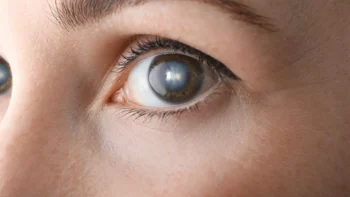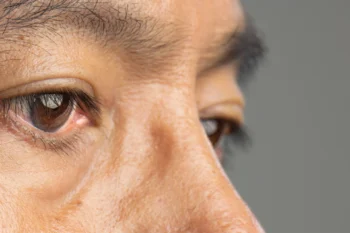Most people are already familiar with the most common eye procedure: LASIK. This refractive surgery is performed around 700,000 times each year in the United States.
But you might not know that there’s another type of eye procedure to correct vision — one that came before LASIK. Photorefractive Keratectomy (PRK) is another option for people seeking clear vision.
These procedures, although similar, are different in some fundamental ways. Depending on your eyes’ shape, structure, and condition, either surgery could be a safe and effective option for improving your vision.
With all the modern treatment options to choose from, it can be challenging to know what choice is right for you. Let’s break down the difference between the two choices, PRK and LASIK, commonly available in Las Vegas. The facts can help you choose between them.
What You Need to Know About LASIK
LASIK is a common refractive surgery that alters the way light enters the eye. Using a laser, the surgeon reshapes the cornea to adjust for nearsightedness and farsightedness, as well as astigmatism.
First, the doctor cleans and numbs the eyes with drops. They then apply a suction ring to keep the eye still and stable. Another device prevents blinking. The patient may feel pressure and the darkening of their vision.
For the procedure itself, the surgeon uses a laser to cut a flap in the cornea. Then, they reshape the cornea with a laser and put the flap back in place. The surgery takes less than 30 minutes and has a low complication rate.
What You Need to Know About PRK
Before LASIK entered the picture, PRK was the most common surgery for fixing nearsightedness, farsightedness, and astigmatism. Like LASIK, PRK also involves reshaping the cornea using a laser.
The outcome is the same as with LASIK, although there are differences in the procedure. Drops numb the eye, and the eye is held motionless so the surgeon can operate safely. The surgeon removes the top layer of the cornea entirely before reshaping it with a laser.
It takes about 15 minutes for both eyes. Just like LASIK, PRK is known as a safe and stable procedure.
PRK vs. LASIK: What’s the Difference?
Looking at both procedures, they’re very similar in both the outcomes and how they’re performed. Both can correct vision using a laser that reshapes irregular tissue in the cornea.
However, they differ in a few crucial ways.
In PRK, the top layer of the cornea tissue is completely removed. The tissue will then grow back over time. In LASIK, only a flap is cut open to allow the laser to reshape the cornea before the flap is closed again after the procedure.
Advantages of PRK
While both procedures are considered safe and low risk, PRK can be a better option for patients who are considered high-risk. This is because it only removes the cornea’s outer layer — not the under layer.
PRK may be the right choice for patients with:
- Large pupils
- Thin corneas
- Irregular astigmatism
- Hyperopia
It can also be an alternative to LASIK for those who participate in contact sports. Those who participate in more physically demanding activities might be at a higher risk of complications with LASIK.
Disadvantages of PRK
Although only the top layer is removed, PRK does remove all of the cornea’s outer layers, as opposed to just a flap with LASIK. This means that the recovery process can be more complicated.
When a patient gets PRK, they may experience a longer recovery time, as well as blurry vision during the recovery process. They might notice mild to moderate discomfort for the first three days after the surgery. In many cases, they may have to wear a temporary bandage to protect the eye as the cornea’s outer layer grows back.
Deciding the Best Option For You
Due to the shorter and less uncomfortable recovery time, LASIK tends to be the more popular option for patients. With LASIK, you can expect almost no downtime — most patients notice the benefits within hours and can go back to their regular activities within a few days at the most. If your eye examination shows few complications, LASIK will likely be the best choice for you.
However, PRK has its advantages: it works as an alternative for those with different structural characteristics. The surgery requires less of the cornea, meaning that those with thin corneas, large pupils, irregular astigmatism, or those involved in contact sports can still enjoy the benefits of the surgery without the risk.
Deciding between PRK and LASIK surgery in Las Vegas primarily comes down to safety. Depending on the structure and characteristics of your eye, you may be prone to complications with standard LASIK surgery. In these cases, PRK can offer the same results with less risk.
Speak to your eye doctor if you’re interested in vision correction. After a thorough examination, they can recommend the best procedure for your eyes.
LASIK vs. PRK: Which is Right For You?
While it can feel overwhelming looking at the options in front of you for vision correction, the decision doesn’t have to be complicated. Both PRK and LASIK are similar procedures that offer the same result: clear vision. Knowing which is right for you comes down to the structure of your eyes, as well as the recommendation of your doctor.
The first step towards corrected vision is to speak to a qualified professional today for an examination and consultation. At Brimhall Eye Center, we offer custom-tailored LASIK solutions for those in the Las Vegas area. If you aren’t the right candidate for LASIK, we provide other surgeries to suit your needs, including ICL, PRK, and clear lens exchange. We’ll help you find what procedure suits you best — and get you on the path towards clear vision as soon as possible.
Ready to see if you’re a good candidate for LASIK or PRK? Contact us today to schedule your free consultation.





